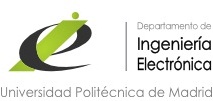Evaluación de los efectos sobre la calidad de imagen médica de los radioisótopos 18F, 68Ga y 48V usando diferentes sistemas tomográficos PET
Esta tesis analiza los elementos que afectan a la evaluación del rendimiento dentro de la técnica de radiodiagnóstico mediante tomografía por emisión de positrones (PET), centrándose en escáneres preclínicos. Se exploran las posibilidades de los protocolos estándar de evaluación sobre los siguientes aspectos: su uso como herramienta para validar programas de simulación Montecarlo, como método para la comparación de escáneres y su validez en el estudio del efecto sobre la calidad de imagen al utilizar radioisótopos alternativos. Inicialmente se estudian los métodos de evaluación orientados a la validación de simulaciones PET, para ello se presenta el programa GAMOS como entorno de simulación y se muestran los resultados de su validación basada en el estándar NEMA NU 4-2008 para escáneres preclínicos. Esta validación se ha realizado mediante la comparación de los resultados simulados frente a adquisiciones reales en el equipo ClearPET, describiendo la metodología de evaluación y selección de los parámetros NEMA. En este apartado también se mencionan las aportaciones desarrolladas en GAMOS para aplicaciones PET, como la inclusión de herramientas para la reconstrucción de imágenes. Por otro lado, la evaluación NEMA del ClearPET es utilizada para comparar su rendimiento frente a otro escáner preclínico: el sistema rPET-1. Esto supone la primera caracterización NEMA NU 4 completa de ambos equipos; al mismo tiempo que se analiza cómo afectan las importantes diferencias de diseño entre ellos, especialmente el tamaño axial del campo de visión y la configuración de los detectores. El 68Ga es uno de los radioisótopos no convencionales en imagen PET que está experimentando un mayor desarrollo, sin embargo, presenta la desventaja del amplio rango o distancia recorrida por el positrón emitido. Además del rango del positrón, otra propiedad física característica de los radioisótopos PET que puede afectar a la imagen es la emisión de fotones gamma adicionales, tal como le ocurre al isótopo 48V. En esta tesis se evalúan dichos efectos mediante estudios de resolución espacial y calidad de imagen NEMA. Finalmente, se analiza el alcance del protocolo NEMA NU 4-2008 cuando se utiliza para este propósito, adaptándolo a tal fin y proponiendo posibles modificaciones. Abstract This thesis analyzes the factors affecting the performance evaluation in positron emission tomography (PET) imaging, focusing on preclinical scanners. It explores the possibilities of standard protocols of assessment on the following aspects: their use as tools to validate Monte Carlo simulation programs, their usefulness as a method for comparing scanners and their validity in the study of the effect of alternative radioisotopes on image quality. Initially we study the methods of performance evaluation oriented to validate PET simulations. For this we present the GAMOS program as a simulation framework and show the results of its validation based on the standard NEMA NU 4-2008 for preclinical PET scanners. This has been accomplished by comparing simulated results against experimental acquisitions in the ClearPET scanner, describing the methodology for the evaluation and selection of NEMA parameters. This section also mentions the contributions developed in GAMOS for PET applications, such as the inclusion of tools for image reconstruction. Furthermore, the evaluation of the ClearPET scanner is used to compare its performance against another preclinical scanner, specifically the rPET-1 system. This is the first complete NEMA NU 4 based characterization study of both systems. At the same time we analyze how do the significant design differences of these two systems, especially the size of the axial field of view and the detectors configuration affect their performance characteristics. 68Ga is one of the unconventional radioisotopes in PET imaging the use of which is currently significantly increasing; however, it presents the disadvantage of the long positron range (distance traveled by the emitted positron before annihilating with an electron). Besides the positron range, additional gamma photon emission is another physical property characteristic of PET radioisotopes that can affect the reconstructed image quality, as it happens to the isotope 48V. In this thesis we assess these effects through studies of spatial resolution and image quality. Finally, we analyze the scope of the NEMA NU 4-2008 to carry out such studies, adapting it and proposing possible modifications.
- Login to post comments
 Printer-friendly version
Printer-friendly version

